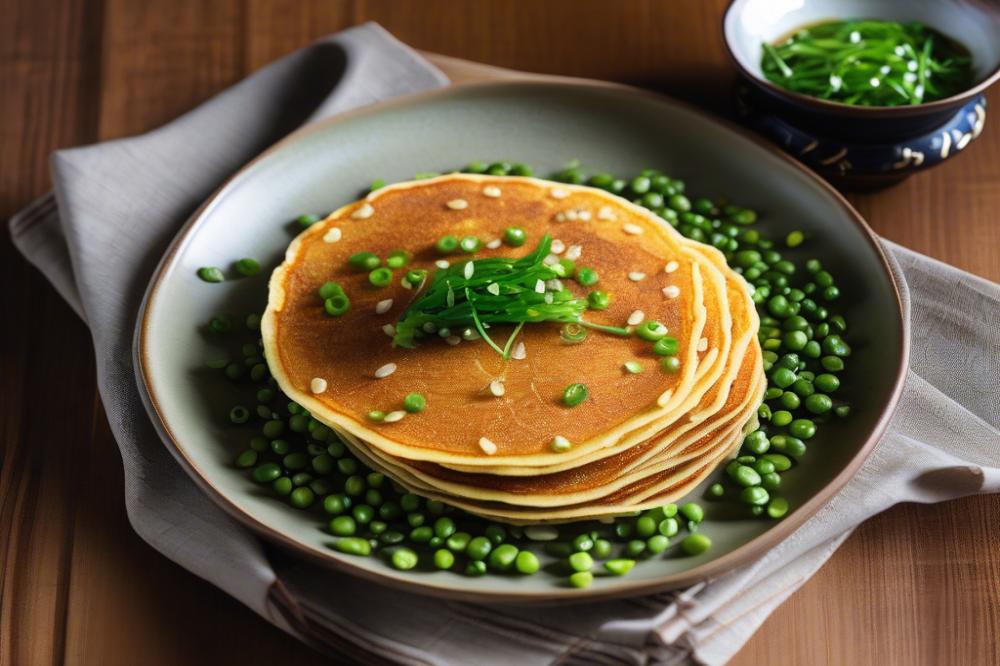Introduction
Bindaetteok is a beloved traditional dish that has a special place in Korean cuisine. These savory pancakes, made primarily from mung beans, are not just food; they are a part of cultural heritage. Originating from ancient times, they encapsulate the essence of Korean cooking with their unique flavors and textures.
The importance of these pancakes goes beyond mere taste. They represent a way of life, where community and family often gather to enjoy homemade meals. In many households, traditional recipes are passed down through generations, highlighting the deep connection that people have with their culinary history. Mung Bean Pancakes offer a glimpse into the rich tapestry of Korean culture and tradition.
Street food plays a vital role in Korea’s food scene. Bindaetteok is often sold by vendors at markets and festivals, beloved by locals and tourists alike. This dish is celebrated for its crispy exterior and soft interior, making it an appealing option for those looking for hearty snacks. Moreover, they are a fantastic choice for anyone seeking healthy vegetarian dishes. Packed with nutrients, they serve as nutritious and tasty alternatives to heavier fare.
Cooking techniques that go into making these pancakes are impressive. The process starts with soaking and grinding mung beans, then mixing them with various vegetables. This not only enhances the flavor but also elevates the nutritional profile. Making your own Mung Bean Pancakes at home provides a satisfying cooking experience while ensuring each bite is fresh and delicious.
Understanding Bindaetteok
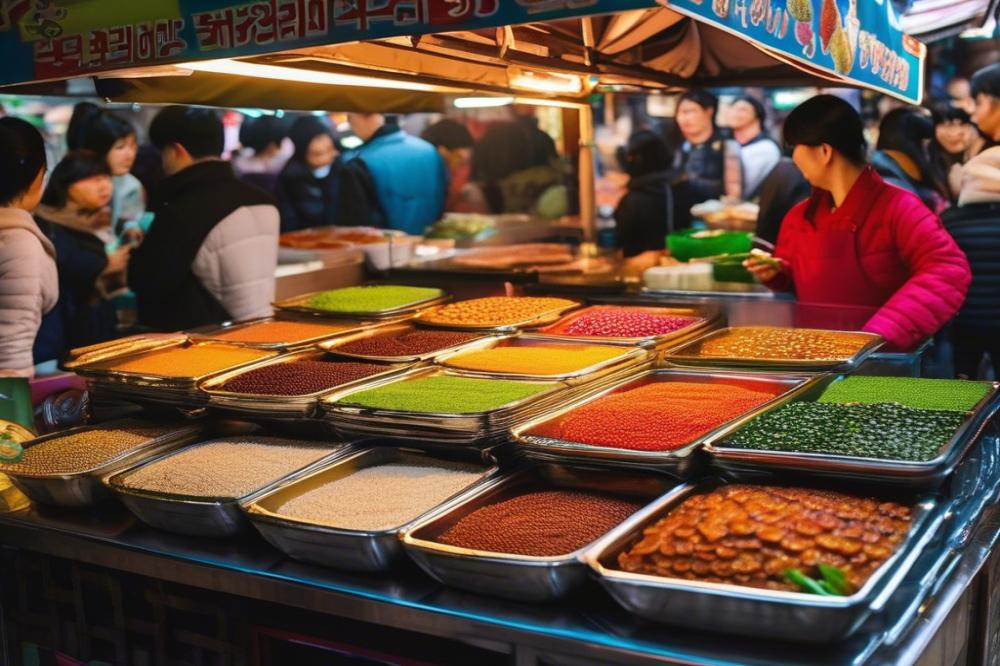
What is Bindaetteok and its variations
Bindaetteok refers to savory pancakes made primarily from mung beans. This dish can vary depending on the region and individual recipes. Some versions include vegetables, such as scallions or carrots, while others may add bits of meat, especially in more elaborate styles. The batter is usually ground fresh, giving these pancakes a distinct texture. Many street food vendors in Korea serve bindaetteok, making it a beloved snack. Its crisp outer layer and soft interior create a delightful contrast.
Historical background and significance in Korean cooking
This dish has roots that trace back centuries in Korea. Traditionally, it was made during the rainy season when fresh vegetables were abundant. Early Koreans depended on easy-to-find ingredients like mung beans to create filling meals. Since the cuisine focuses on utilizing available foods, adapting recipes became a natural process. Mung beans were praised not only for their taste but also for their nutritional benefits. Over time, bindaetteok evolved into a symbol of comfort and home cooking. Its preparation showcases various cooking techniques that have been passed down through families.
Cultural occasions for serving Bindaetteok
Pancakes made from mung beans often make an appearance during special occasions. Many families enjoy them during celebrations such as birthdays or holidays. Furthermore, they are a common feature at harvest festivals, symbolizing gratitude for the season’s bounty. Street food markets buzz with excitement as vendors prepare bindaetteok for hungry customers. People appreciate this dish as a hearty snack and a flavorful treat. Vegetarian dishes like this are crucial for those who choose not to eat meat. Each plate of bindaetteok carries its own story, woven into the fabric of Korean cuisine.
Ingredients and Nutritional Information
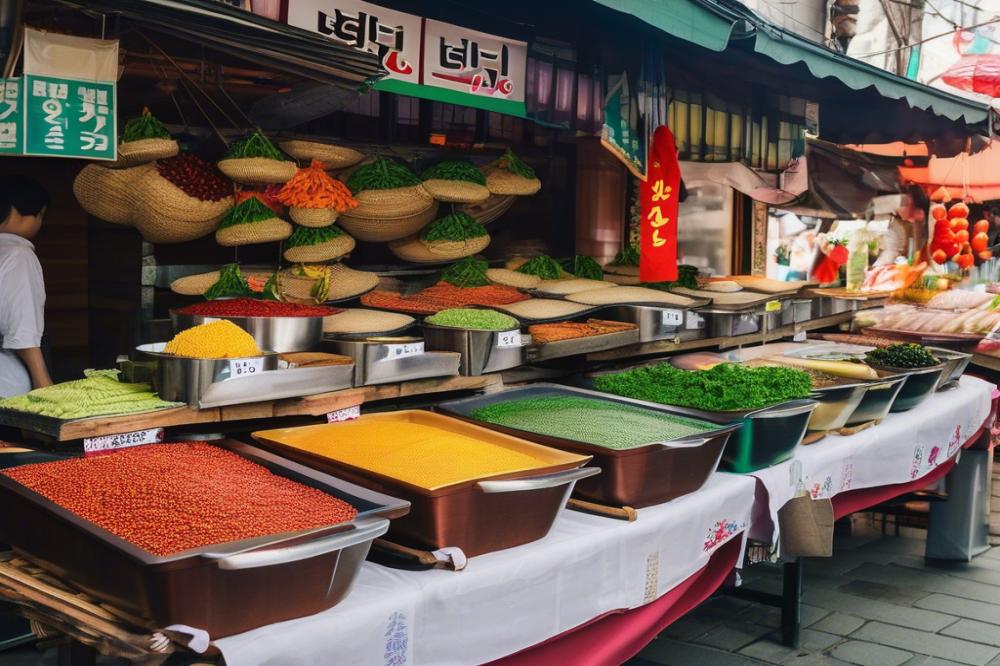
Making satisfying mung bean pancakes starts with gathering the right ingredients. Here is a list that will help you prepare a tasty version of this traditional dish:
List of Ingredients
- 1 cup of dried mung beans
- 1 cup of water (for soaking)
- 1 small zucchini, grated
- 1 small carrot, grated
- 2 green onions, finely chopped
- ½ teaspoon of salt
- Black pepper to taste
- Vegetable oil for frying
These ingredients come together to create a delicious meal. The mung beans form the base, while vegetables add flavor and nutrition. Mung beans are a staple in Korean cuisine and serve as a great source of plant-based protein.
Nutritional Information for Each Ingredient
- Mung beans: High in protein and fiber, they are low in calories. One cup provides about 231 calories, 14 grams of protein, and 15 grams of dietary fiber.
- Zucchini: Adds moisture and nutrients. One small zucchini has roughly 33 calories, and it is rich in vitamins A and C.
- Carrot: Provides sweetness and color. One small carrot has about 25 calories and is an excellent source of beta-carotene.
- Green onions: These add a flavorful kick. A small serving contains about 10 calories and is loaded with antioxidants.
- Salt: Just a pinch enhances flavor but limits sodium intake for health benefits.
- Vegetable oil: Essential for frying. Remember that it’s important to use it sparingly to keep the dish healthier.
A variety of vegetables can also be included. Consider adding bell peppers, mushrooms, or even spinach for more taste and nutrition.
Healthy Aspects of This Vegetarian Dish
This recipe offers many healthy aspects that make it an appealing option. It is naturally gluten-free, which benefits those with gluten sensitivities. The use of mung beans ensures that eaters receive protein without meat. Fresh vegetables contribute essential vitamins and minerals. Low in saturated fats, this option can fit well into a heart-healthy diet.
Street food lovers will enjoy the crispy texture while cherishing the wholesome ingredients. Mung bean pancakes serve as an excellent snack or meal. They embody a wonderful balance of taste and health, reflecting the best of Korean cooking traditions.
Cooking Instructions
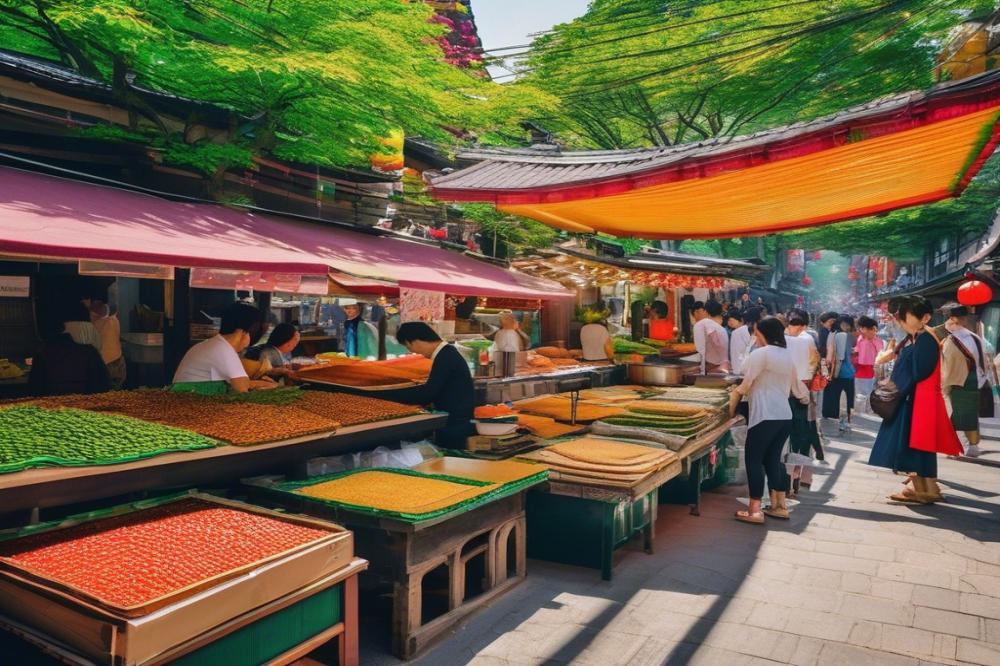
Step-by-step method to prepare Bindaetteok
Soaking and blending mung beans
Start by soaking 1 cup of mung beans in water for at least 4 hours or overnight. This step softens the beans and enhances their flavor. After soaking, drain the beans and rinse them under cold water. Next, place the soaked mung beans into a blender. Add about 1 cup of water to the blender. Blend the mixture until it becomes a smooth, thick paste. Scrape down the sides of the blender as needed to ensure an even texture. Transfer the blended mixture to a mixing bowl.
Preparing the batter and adding vegetables
Chop a variety of vegetables for the filling. Traditional options include zucchini, carrots, and scallions. Aim for about 1 cup of chopped vegetables. Mix the vegetables into the blended mung bean paste. Add a pinch of salt and pepper for flavor. Feel free to adjust the salt according to taste. If you like a bit more texture, you can fold in some chopped kimchi. This adds a delightful zing to your vegetarian dish.
Cooking techniques for perfect pancakes
Heat a skillet over medium-high heat. Once hot, add a tablespoon of oil. Pour a ladleful of the mung bean batter onto the skillet. Flatten it gently with the back of the ladle to create a pancake shape. Cook for about 3 to 4 minutes on one side, or until it turns golden brown. Flip the pancake carefully and cook for another 3 minutes on the other side. Repeat this process for the remaining batter. Adjust the heat as necessary to avoid burning.
Serving suggestions and condiment pairings
Serve the pancakes hot for the best taste. They pair wonderfully with dipping sauces. Soy sauce mixed with vinegar and a little sesame oil works perfectly. Alternatively, a spicy gochujang sauce can add a kick. These pancakes are great as street food or a healthy snack. Consider adding a side of pickled vegetables to enhance the meal. Enjoy them fresh or packed for lunch!
Tips for Perfecting Bindaetteok
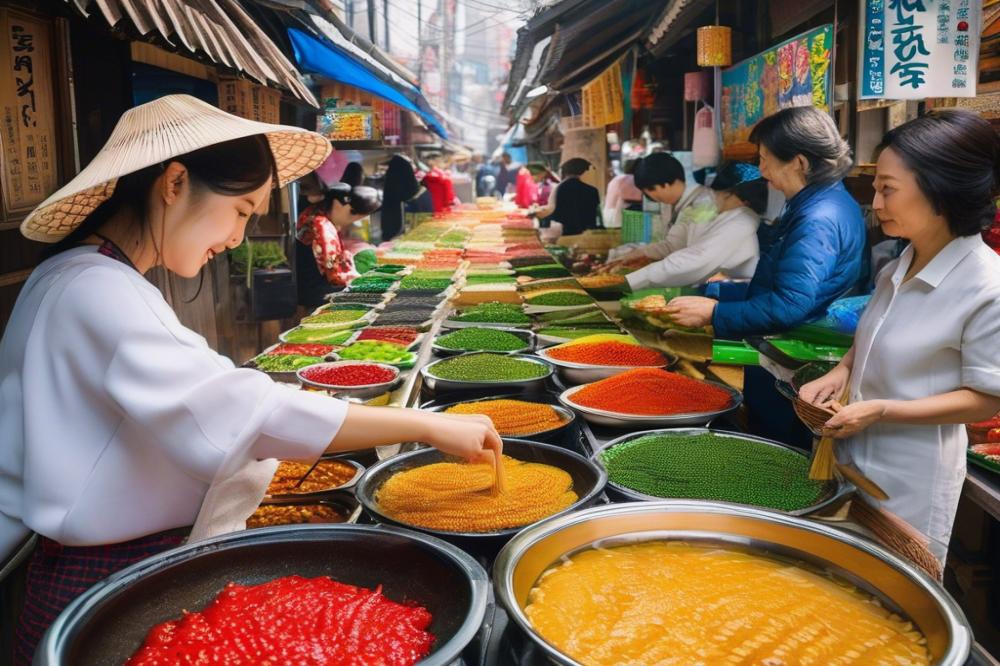
Common Mistakes to Avoid
Many people struggle with achieving the right texture. Overmixing the batter can lead to gummy pancakes. The mixture should be slightly chunky for a better bite. Ensuring that your oil is hot enough is crucial; otherwise, they will absorb too much grease. Avoid using too many fillings, which can make the pancakes fall apart. Instead, keep ingredients balanced for the best results.
Alternative Ingredients and Variations
Switching up fillings can make the dish even more enjoyable. Instead of the usual vegetables, try adding minced kimchi for a spicy kick. For a richer taste, experiment with different mushrooms. A splash of soy sauce or fish sauce can also enhance umami flavors. Some kitchens even use quinoa or rice flour for gluten-free variations. These adjustments cater to many dietary needs while still capturing the essence of traditional recipes.
Adjusting Flavors for Personal Preferences
Flavors in this dish can easily be tailored to suit individual tastes. If you like spiciness, consider adding chopped jalapeños or gochugaru. Fresh herbs, like chives or perilla leaves, can also uplift the dish’s flavor profile. Taste the batter before cooking; this allows you to tweak the saltiness or spice levels as desired. Experimentation is part of the fun in Korean cooking!
Storing and Reheating Leftovers
Leftover pancakes can still taste great with proper storage. Keep them in an airtight container in the refrigerator for up to three days. To reheat, consider using an oven or an air fryer for a crispy texture. Microwaving can work in a pinch, but it may result in sogginess. Enjoy these healthy snacks as a quick meal, or serve them as a street food-inspired treat at home.
Final Thoughts on Mung Bean Pancakes
The significance of mung bean pancakes in Korean cuisine cannot be overstated. These savory delights bring people together, often enjoyed during festivals and gatherings. Each bite offers a glimpse into rich culinary traditions that have been passed down through generations. This dish serves not just as food but as a cultural experience, celebrating the flavors of Korea.
If you have not yet tried making these pancakes at home, now is the perfect time. The process can be enjoyable and is incredibly rewarding, especially when you savor the results. Shared moments around the table with friends or family can turn cooking into a cherished memory. Follow the traditional recipes outlined earlier, and adapt them as you see fit. Put on some music, gather your loved ones, and let the excitement of cooking unfold.
Further exploration of Korean cuisine opens up a world of flavors and techniques waiting to be discovered. From spicy kimchi to comforting soups, the diversity of dishes keeps meals exciting and enjoyable. Each recipe carries its own story, inviting your kitchen to become a place of learning and adventure. Try experimenting with various ingredients and methods to find your own favorites. Who knows? You might even create a new tradition of your own!

